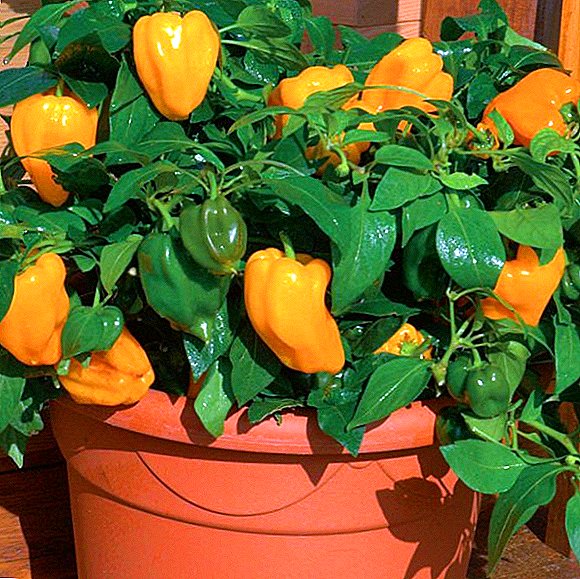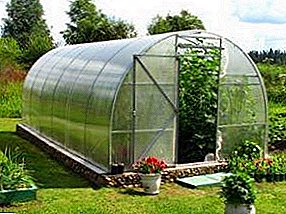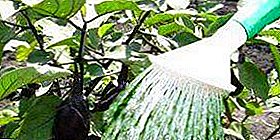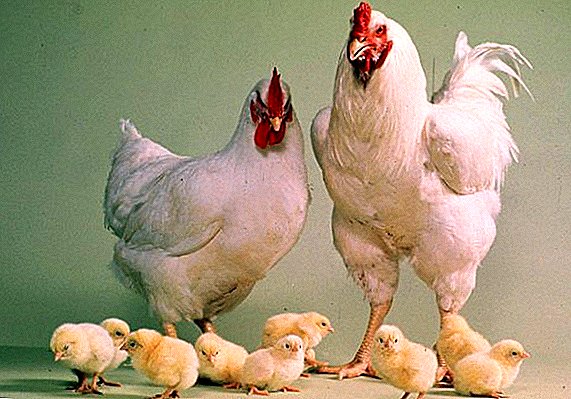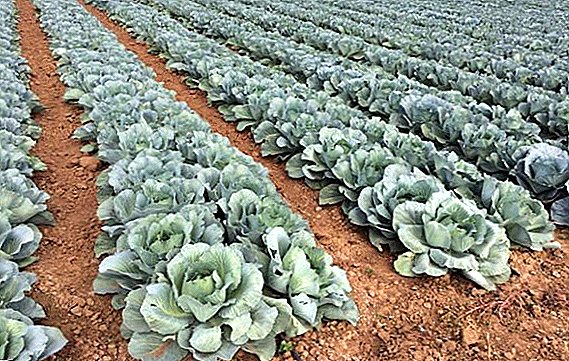 Almost all gardeners grow cabbage in the garden. However, this vegetable requires special care, especially when it comes to watering.
Almost all gardeners grow cabbage in the garden. However, this vegetable requires special care, especially when it comes to watering.
In our article we will describe how to water the cabbage after planting in the ground to get a rich and tasty harvest.
Conditions for growing cabbage
Growing cabbage is a rather difficult task. Even with all the rules of care, there is no guarantee that various diseases and pests do not attack the crop. It is very important to pay attention to soil moisture, since even a slight deviation will lead to negative consequences.  It is necessary to pay attention to the choice of a place for landing. It is better to choose sunny places, as the vegetable does not like shade. Also, do not choose for planting areas on which radishes, turnips, tomatoes and beets were growing.
It is necessary to pay attention to the choice of a place for landing. It is better to choose sunny places, as the vegetable does not like shade. Also, do not choose for planting areas on which radishes, turnips, tomatoes and beets were growing.
Important! Before irrigation, it is recommended to loosen the soil - so moisture can quickly penetrate to the root system.This is due to the fact that these crops take away all the nutrients from the soil, and can also leave behind various diseases and pests. Cabbage is better to plant on the site where potatoes, cucumbers, legumes and grains used to grow.
Do not choose to plant areas with acidic soil. If you do not have such, it is mandatory to conduct liming.
Do I need moisture cabbage?
It is very important to know how to water the cabbage in the open field after planting. Vegetable is in need of moisture due to the presence of morphological features: a high level of evaporation from the upper leaflets, a relatively shallow location of the root system.  Depending on the growth phase, the vegetable needs different amounts of moisture. Most of the water she needs during seed germination and during the period when seedlings begin to take root in the ground.
Depending on the growth phase, the vegetable needs different amounts of moisture. Most of the water she needs during seed germination and during the period when seedlings begin to take root in the ground.
When an assimilation surface develops and heads are formed, it also needs more moisture. At this time, the soil moisture should be about 80%, and the air humidity - about 80-90%.
Did you know? According to a legend about the origin of cabbage, it grew from the drops of sweat that fell to the ground from the head of the god Jupiter.When the recommended level is lowered, the foliage will cover the gray bloom, and it will turn pink, the stem will thicken and premature heading will occur.
However, do not think that cabbage can be irrigated without restrictions.  Excessive soil moistening in combination with low temperature can provoke a halt in vegetable growth, stop heading off, leaves a lot of anthocyan spots on the leaves, and bacteriosis infection will occur.
Excessive soil moistening in combination with low temperature can provoke a halt in vegetable growth, stop heading off, leaves a lot of anthocyan spots on the leaves, and bacteriosis infection will occur.
With a decrease in air humidity there is a decrease in the quantity and quality of the crop.
Learn about such cabbage representatives as kohlrabi, kale cabbage, pak-choi, white cabbage, broccoli, red cabbage, Brussels sprouts, cauliflower.
Watering features
To grow a rich harvest, you need to know and comply with some features of how to water the cabbage. Consider them.
How often?
Most often, irrigation is carried out at such growth stages:
- after planting seedlings;
- after the formation of heads.
 Before the beginning of the harvest period, as a rule, it is not recommended to water the cabbage plentifully, as this can lead to cracking of the heads. In order not to encounter such a problem, irrigation is stopped one month before the cabbage is fully ripe.
Before the beginning of the harvest period, as a rule, it is not recommended to water the cabbage plentifully, as this can lead to cracking of the heads. In order not to encounter such a problem, irrigation is stopped one month before the cabbage is fully ripe.Also, do not water the vegetable too much after a long drought.
Most often, when irrigating, gardeners are guided by a method based on climatic conditions. Humidification is carried out at different stages of plant growth (seedlings, formation, adult culture).
The frequency and volume of irrigation depends on how long it was raining, how much was in the period of sunny days, what degree of aridity.
Important! Do not plant cabbages too close to each other, as neighboring plants can block the light that young seedlings so need.After the seedlings are planted in open soil, it is necessary to carry out its irrigation at the rate of 5-6 liters per 1 square. m daily for 10-14 days. After 2 weeks watering is carried out 1 time per day, using 1 square. m 12-15 liters of water.

Times of Day
It is best to carry out irrigation in the evening, as during the day, under the scorching sunlight, burns may appear on the leaves. When the weather is cloudy for a long period, abundant watering can be done every 5-6 days, and in hot and sunny moisture it should be done every 2-3 days.
What should be the water
For watering is most suitable warm water. You can use the water from the tanks, which heats up under the sun during the day.
It is not recommended to water the vegetable with cold or chlorinated water, a liquid with a high concentration of iron. The optimal indicator of water temperature for irrigation is + 18-20 ° C.
It will also be useful for you to find out whether it is necessary to cut the leaves off the cabbage, when and where to dive the cabbage, how to deal with the kela on the cabbage.
Ways
For irrigation, you can use various devices: watering cans, buckets, hoses and others.  It is recommended to water in such a way that the maximum amount of moisture goes to the root system, so the plant will grow better and faster. Watering with a watering can and a hose can be carried out both at the root of the cabbage, and between the rows. It is not recommended to allow the ingress of large amounts of moisture to the culture tops.
It is recommended to water in such a way that the maximum amount of moisture goes to the root system, so the plant will grow better and faster. Watering with a watering can and a hose can be carried out both at the root of the cabbage, and between the rows. It is not recommended to allow the ingress of large amounts of moisture to the culture tops.
Cabbage and drip irrigation
Thanks to drip irrigation technology, it is possible to regulate the flow of water to each plant. For this there are special devices - droppers.
The principle of drip irrigation is as follows: water flows through a special hose, in which holes are made through certain distances (droppers are inserted into them). Of these, water in the required amount pours out under each plant. 
The advantages of drip irrigation include:
- moisturizing only those places that need moisture;
- the ability to apply drip irrigation technology on any soils and reliefs;
- there is no moistening between the rows, which allows for weeding or auxiliary work.
Did you know? The largest cabbage listed in the Guinness Book of Records, was grown in Alaska (USA) and had a weight of 34.4 kg.After reading the article, you learned how and how to water the cabbage for a good harvest, so there is no doubt that you will be able to grow a large number of tasty and healthy vegetables.



